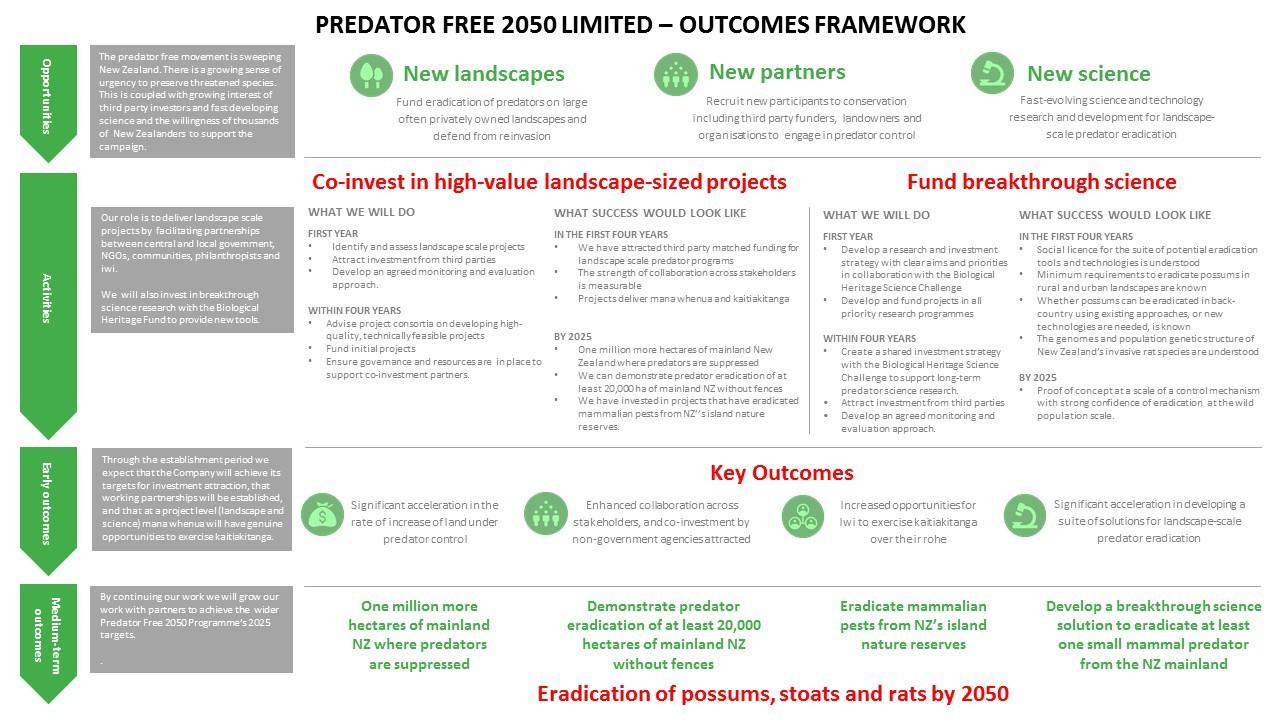
2 minute read
Key Activities
Landscape-scale eradication with new partners
Core to our success is to identify landscapes where we have confidence of sustained predator eradication and preserving high values of biodiversity. To support us in this role we receive advice from the Department of Conservation.
Advertisement
Eligible landscapes may fall outside the conservation estate and may have a variety of owners including regional and local government, iwi and private landowners.
In assessing applicants, we will investigate and weight several attribution factors including:
physical scale of operation
sustainability of the project and risk of re-invasion
strength of governance
Maori participation and collaboration
value of biodiversity at stake
quantum of matched funding and security of collaborating partners
The process began in 2017 with the issue of an Expression of Interest request, which received 45 applications from around New Zealand. Seven projects were invited to submit Requests for Proposal, and we entered into negotiations to activate of all seven. By October 2018 we expect to have completed contract negotiations and publicly launched five of those projects, with the other two projects seeking further co-funding commitments.
We will work with partners to initiate further projects that meet our criteria and align with provincial growth and other priority Government objectives.
Breakthrough science
Our Research Strategy is designed to maximise our ability to develop a break-through science solution capable of eradicating at least one small mammalian predator from the mainland by 2025, an important milestone on the road to a predator free New Zealand.
The Science Research Strategy was constructed by a strategy group co-ordinated by the New Zealand’s Biological Heritage National Science Challenge, and has been independently peer reviewed. The strategy is not set in stone, but will be modified according to research progress and developments in the wider sciencecommunity.
The priority components of the strategy, which are complementary to the development of host-specific toxins and improved lures already ongoing through the Challenge, are organised into four programmes:
Environment and society: A deep respect for ethics and the social licence to operate is paramount for all science breakthroughs for the 2050 programme. We also need to better understand the likely ecological and environmental consequences of our predator management actions.
Eradicating the last 1%: New Zealand is a world leader in predator control, however eradication and keeping areas predator-free is an ongoing challenge. We will seek advances in currently employed tools and approaches to make eradication at the landscape scale possible, initially for possums.
New genetic tools: New tools such as ‘gene-drive’ are being discussed globally for pest management. We are maintaining a watching-brief on international developments in this science through membership of IUCN’s Task Force on Synthetic Biology and Biodiversity Conservation, and carrying out mathematical modelling and genome sequencing.
Computer modelling: We will provide openly accessible tools that all communities and agencies contributing to PF2050 programme can use to share their data and design their management approaches. This will drive a national community of practice, aligning efforts to do more predator management better.

8
Commercial In Confidence



